Fly fishing in the Italian Alps, Part 3: Young marble giants
Searching for slabs on the Passer river in Südtirol / Trentino Alto-Adige, part of our five-part series on fly fishing in Italy
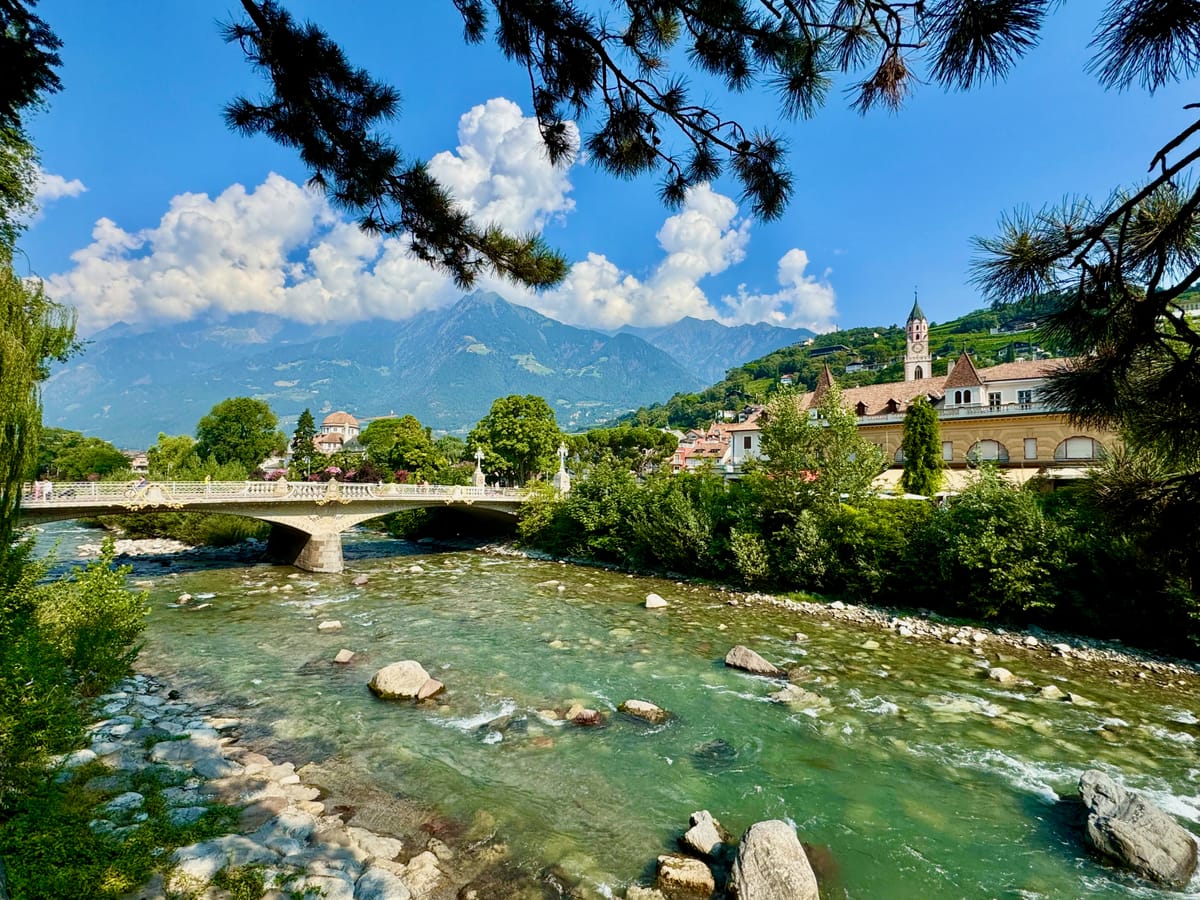
𓆟 𓆝 𓆟
Our glorious fall continues here in Oregon, and I'm sleepless off a summer steelhead session on the Deschutes, with all the zero-dark-thirty wakeups that entails. But we're continuing our recap of this summer's Italian Alps trip for another two weeks.
Let's rewind to all the prosciutto and melon, the best and the würst, continuing in the north east part of the country, Trentino-Alto Adige / Südtirol. Catch up with part 1, all about the rules and regulations around Italian fly fishing, and part 2, fishing the Ram up near the Swiss border.
n.b. If you're reading this and have expertise around fly fishing in Italy that would be helpful, or you can correct any of my likely plentiful errors, please leave a comment!
After acclimatizing in Piemonte, we swung around Milan and back up to the north east corner of Italy, home of the Dolomites and the country’s germanic population, in Südtirol / Trentino-Alto Adige.
With a few more stops to fish in that province, in between family hiking, splashing, rock climbing, fun-bobbing, and other various activities I had a tiny goal of my own: catch a marble trout.
Marble trout (salmo marmoratus in Latin, or Trota marmorata in modern Italian) are a species found solely in this corner of the globe, solely rivers that feed into the Adriatic sea. They’re only found in Italy, Slovenia, Bosnia, Croatia, Montenegro, and parts of Albania, having been considered mostly extirpated (locally extinct) from the Drin river basin, which touches parts of North Macedonia, Bosnia, and Albania.

Similar to the bull trout we have in Oregon, they’re powerfully built, with large, bullet-shaped heads, and the capacity to get quite big. Very different to bulls, though, marble trout have unique patterning on their backs and sides, a wormy, squiggly array of hypnotic lines.
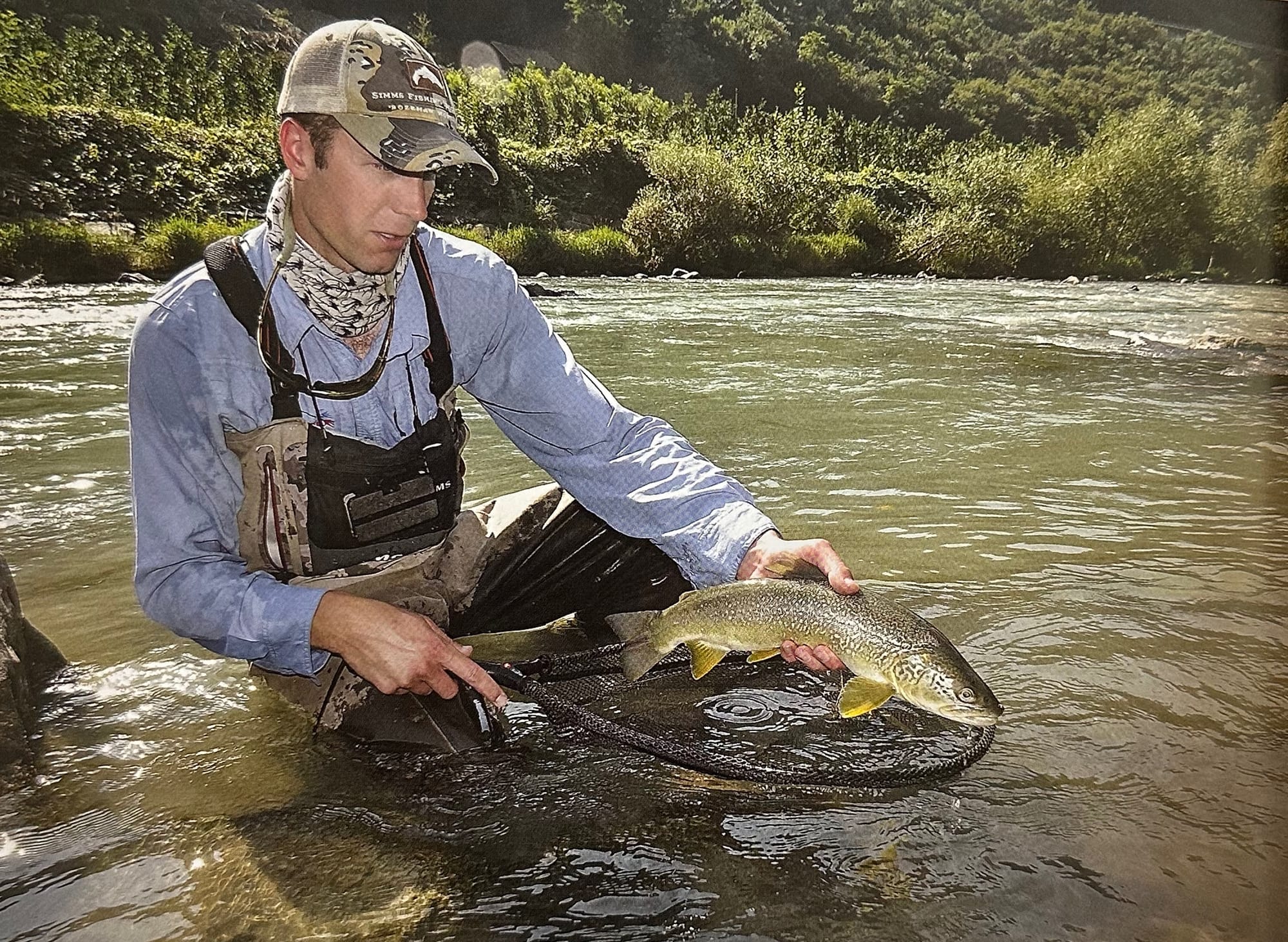
I’m not a completist, or a fanatic about goals, but it felt like, hey, I’m here, so why not give it a shot. It sure would be fun to find another species of trout that doesn’t live in North America while I’m here.
Luckily, this opportunity became a reality in the region on Italy’s northeastern flank. And from my meager research, the town we were headed to, Merano, had a beat nearby on the Passer river that held marble trout.
So, next stop, our old-ass Airbnb in Merano, then onward.
Read all the posts in the Italy 2025 series on fly fishing in the Italian Alps here. 🇮🇹
Castle-life cosplay
Yeah, so there’s that. We spent a few days in Merano residing in a twelfth-century castle.
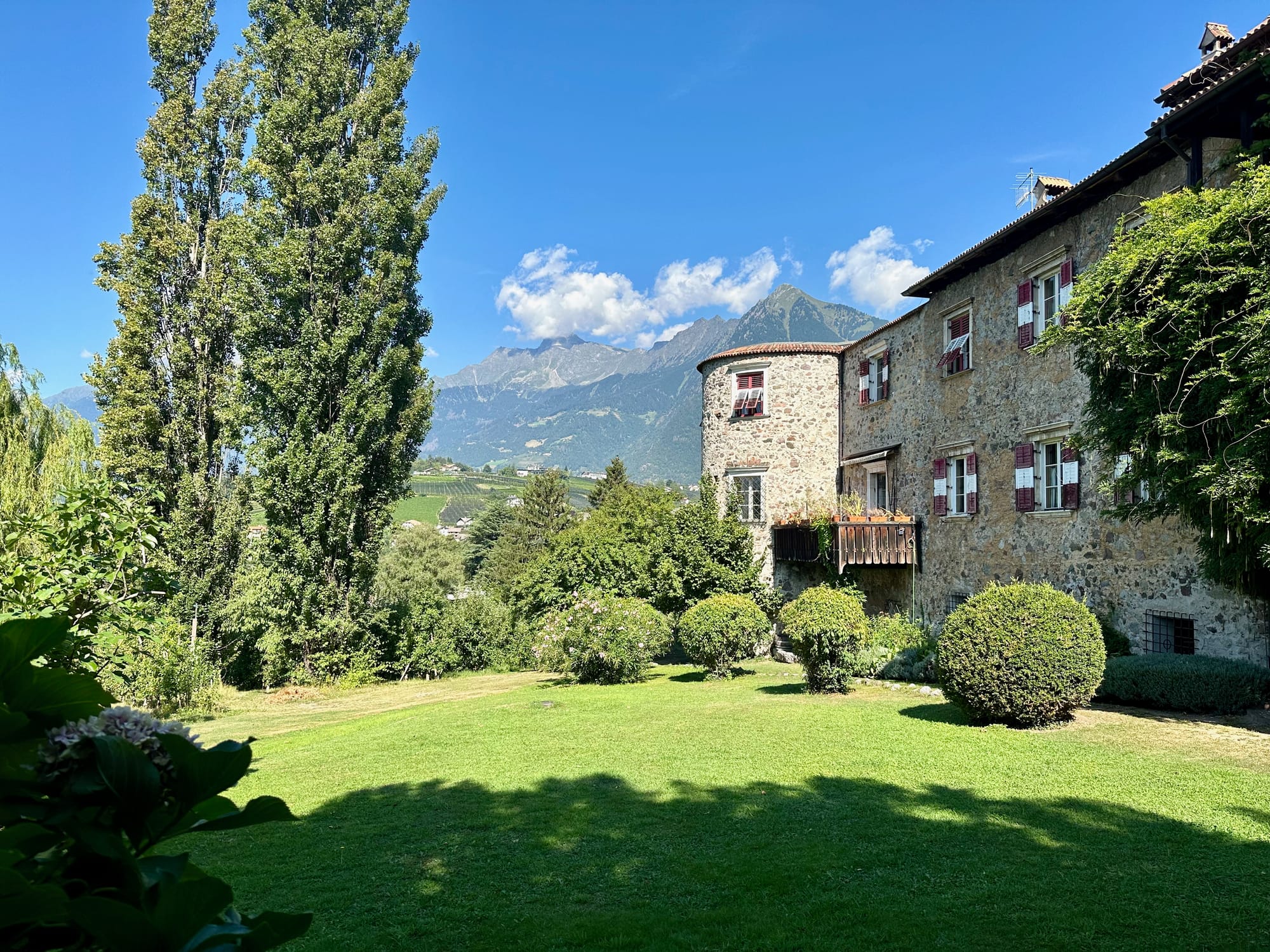
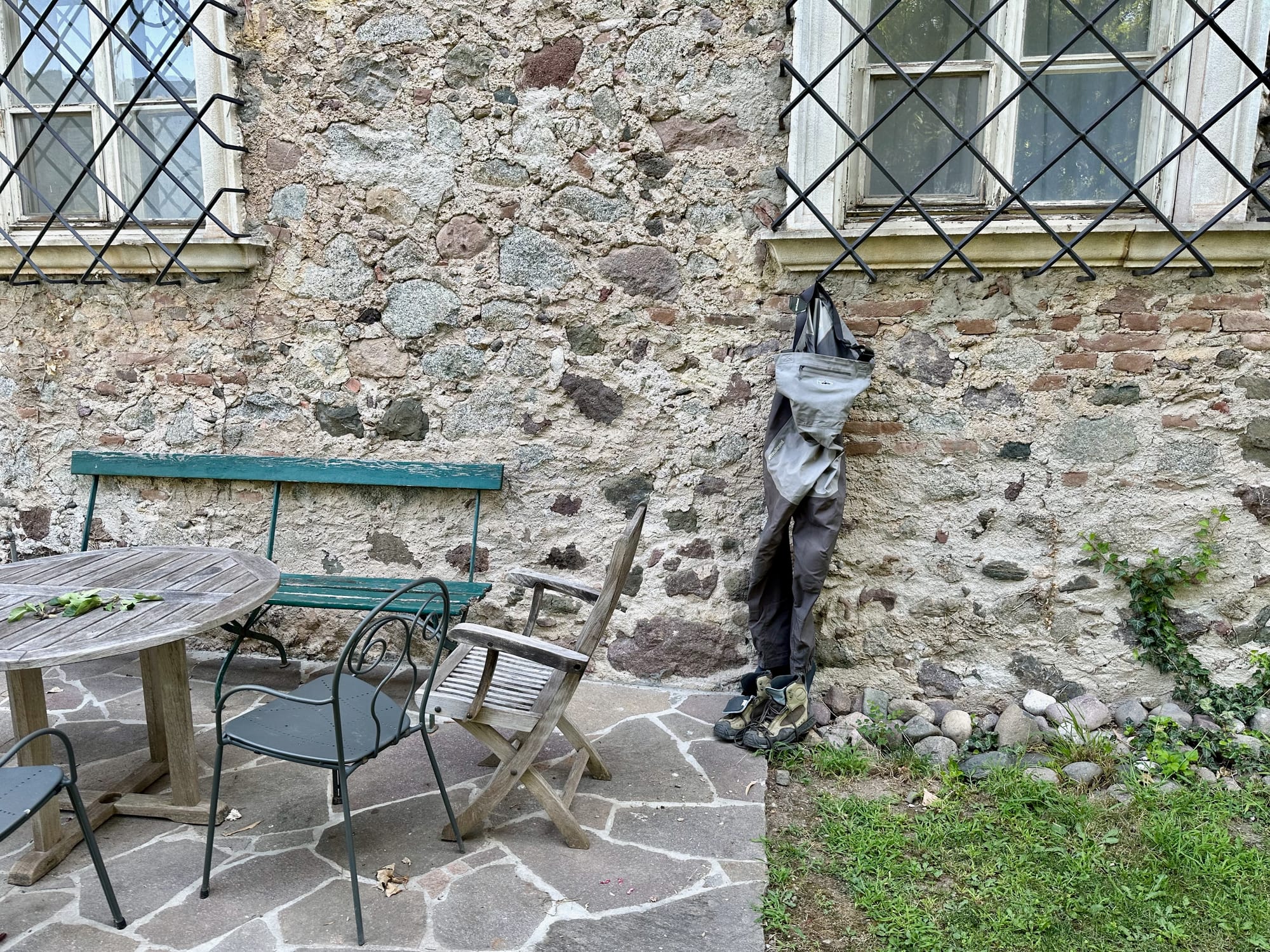
I'm sure the original inhabitants of the castle had a special room for wader storage.
It turned out to be a good choice. Not only because it gave the kids stuff to do for a few days, in exploring the corner tower of the castle the owner had turned into apartments, and the orchards that make up its extensive gardens. It also stayed relatively cool. August in Italy gets hot, really hot, and humid.
Where Merano’s situated, in a valley, storms tended to come off the mountains every couple days, brew up in the humidity, then drop afternoon rain with the occasional thunder. Never enough of the latter to be worrisome, or the former to break the torpor.
Spa-time in Merano
Merano’s a lovely town with history as a thermal spa (from sometime in the 14th C) getaway for the elite (the Austro-Hungarian empire’s Princess Sissi of Austria in the late 19th Century sent everyone swooning with her perambulations around the town’s many walking paths) and contemporary trendsetter roost (There’s a Monocle shop, and founder Tyler Brûlé is a homeowner).

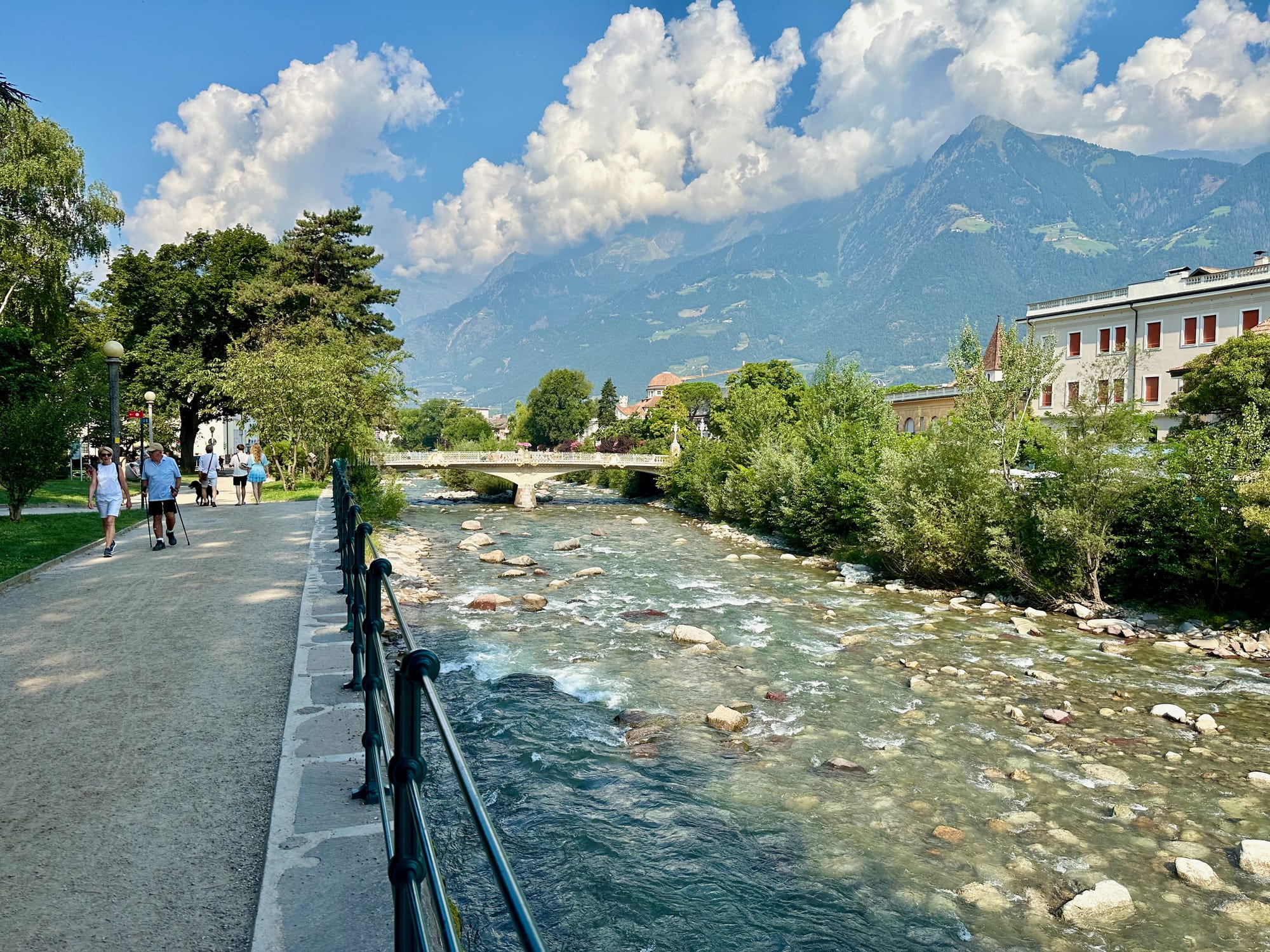
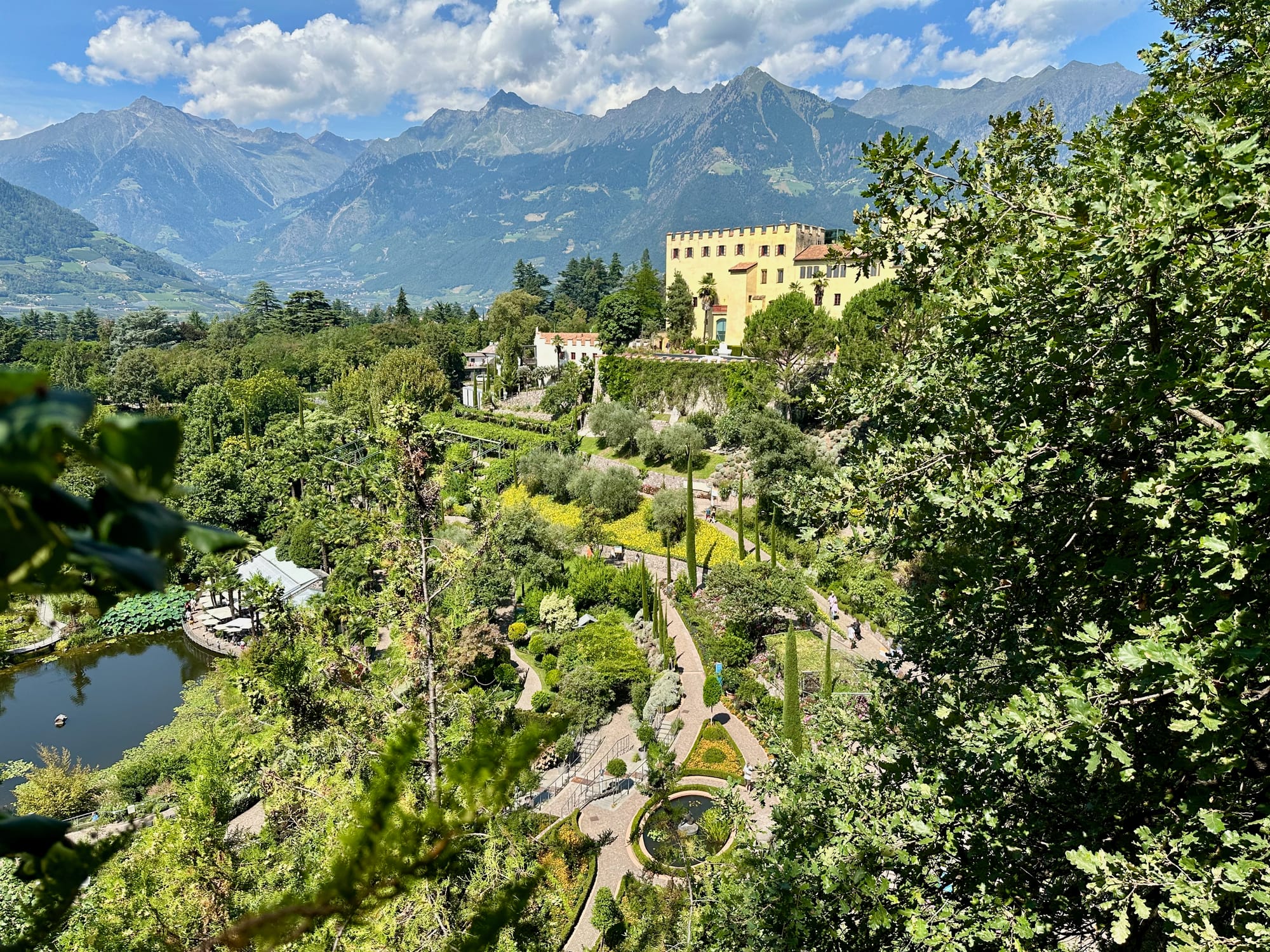
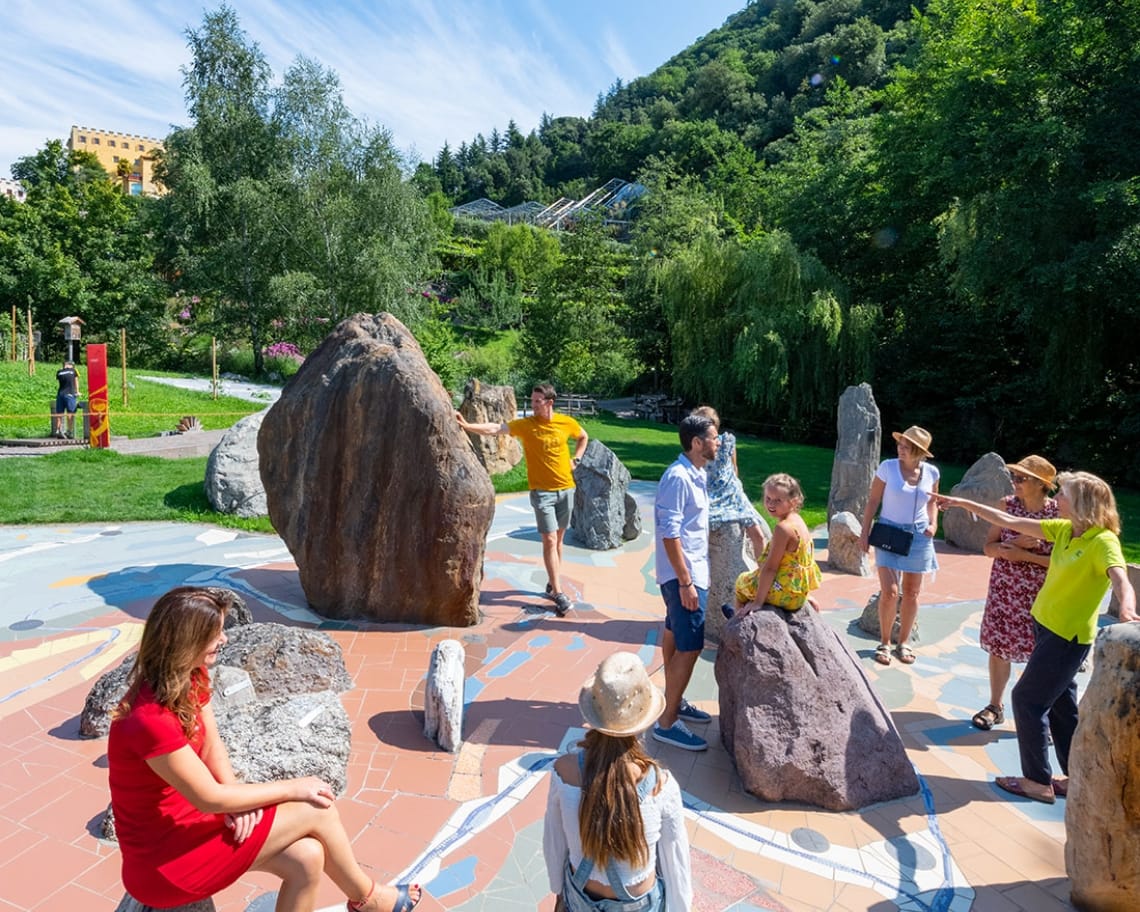
Various Merano scenes. The Trauttmansdorff (non-fish-related, afaik) Gardens (lower) had a bunch of amazing interactive experiences, including a geologic mosaic of the region's rock makeup.
The region is core to Northern Italy’s apple production, with a massive chunk of the EU’s apples grown nearby. Just outside of Merano’s city center orchards start to appear, from smaller semi-commercial spreads like the one at our castle digs (which apparently just about covers the heating bill, which one imagines must be not insignificant in such an old structure) to the bigger multi-acre concerns, full-on orchards, further out of town.
Near where we were, in town, in most places the agricultural infrastructure has become the town infrastructure. Some of the best trail running and walking paths, part of the city’s pride, trace along working canals, modest ditches channeling water up and down and criss-cross the hills, draining and feeding the various crops and tempting a local variety of slug, which go about 4” long in a hot-pepper orange, to their death by drowning.
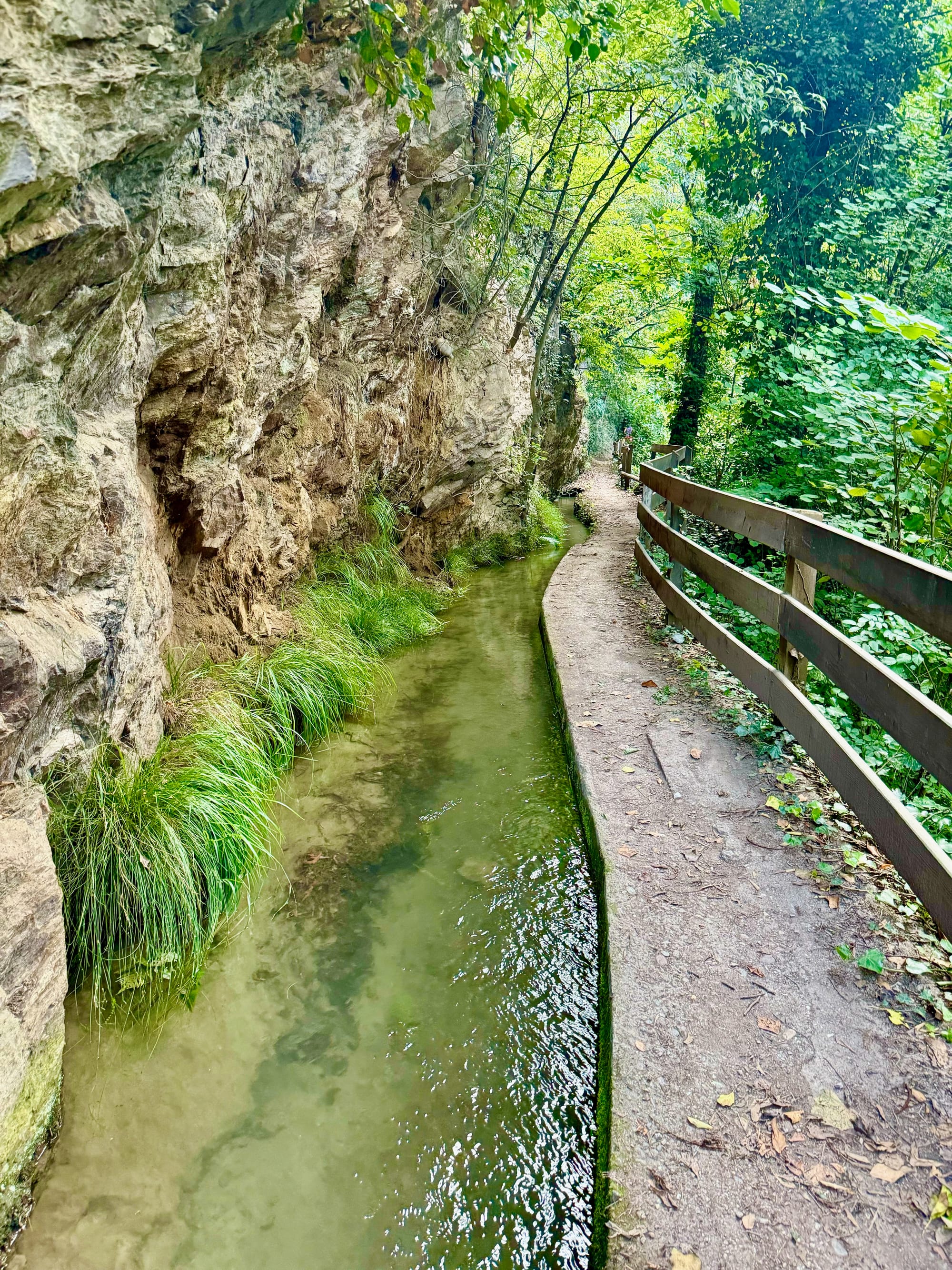
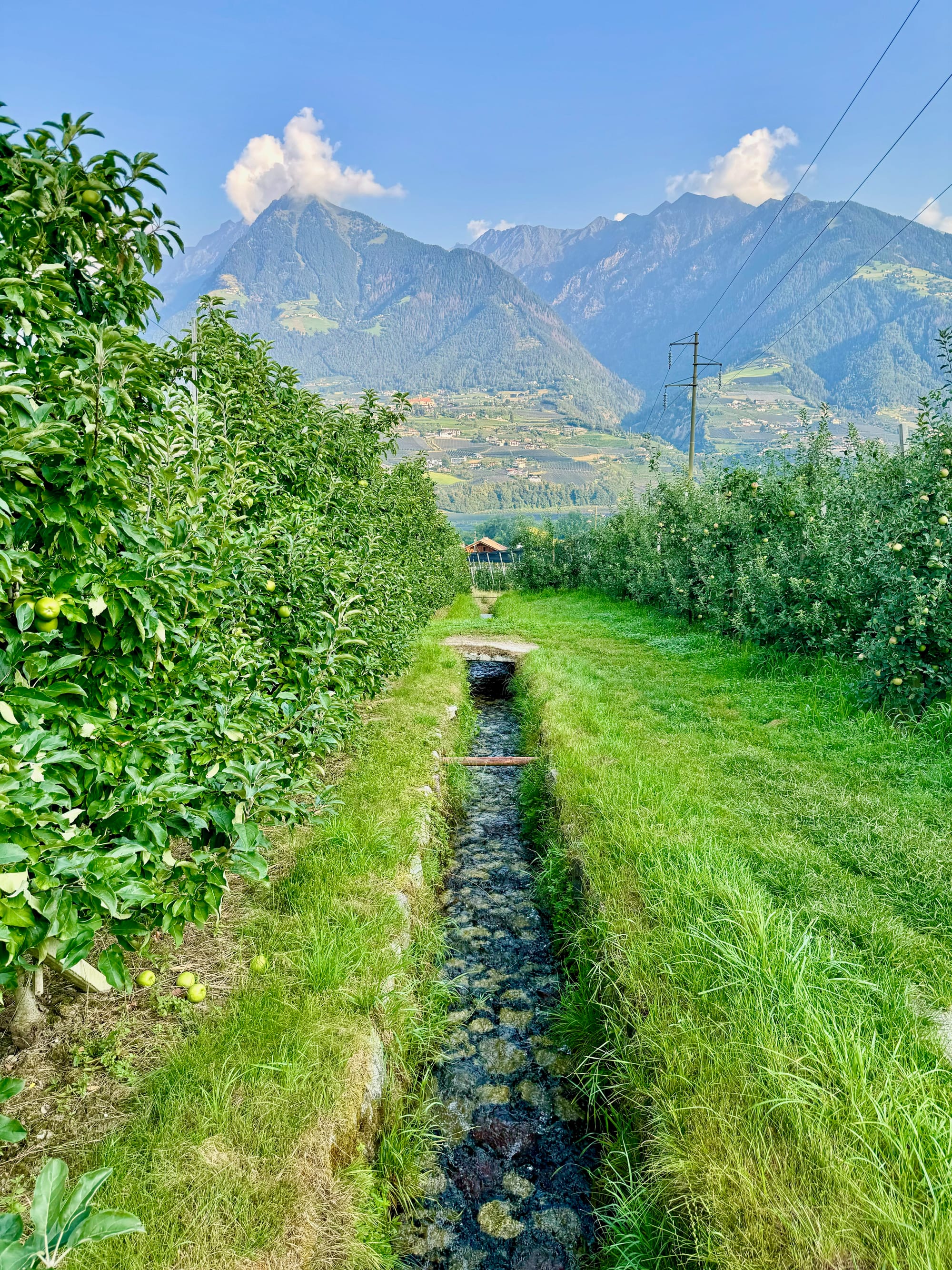
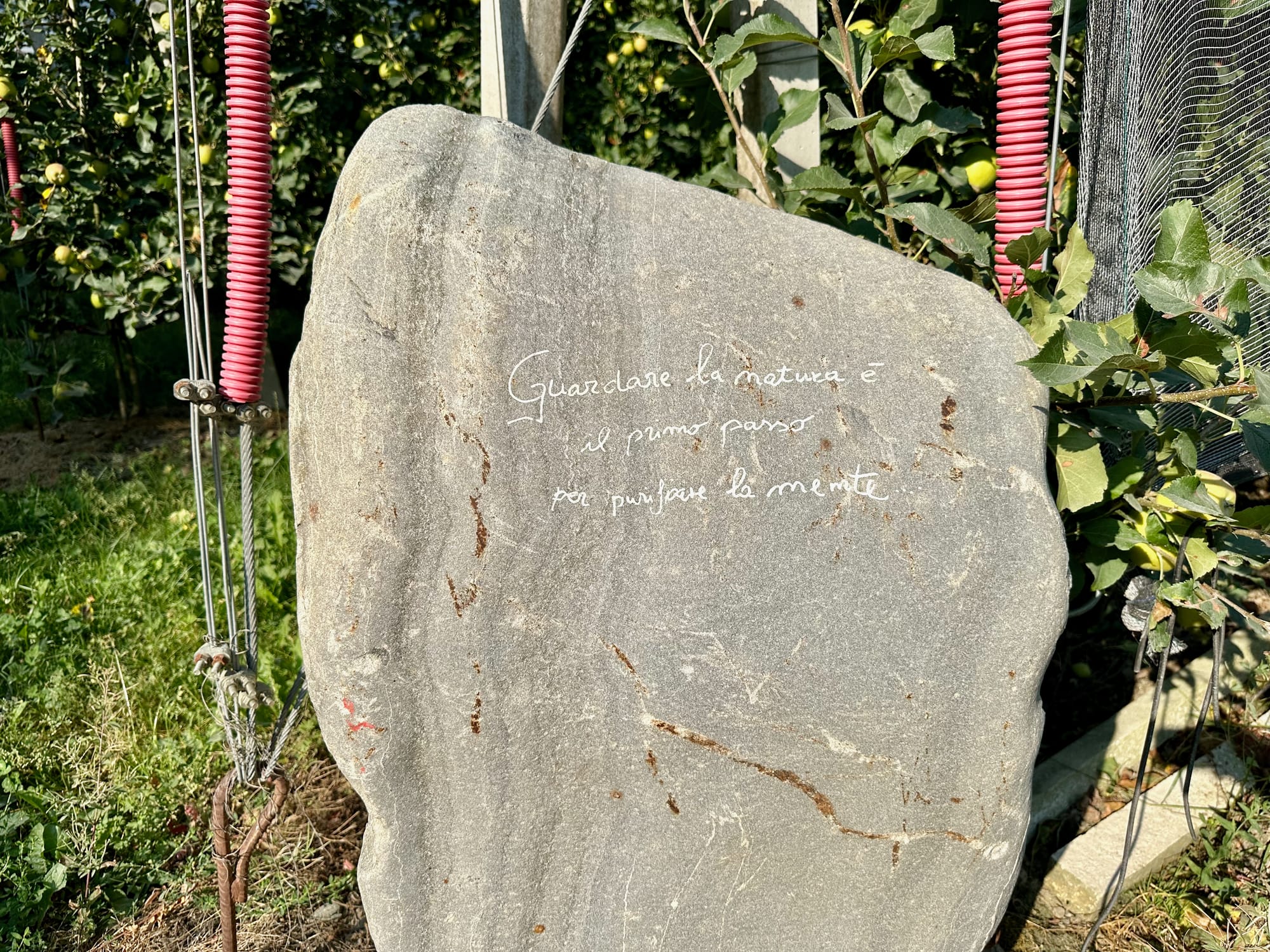
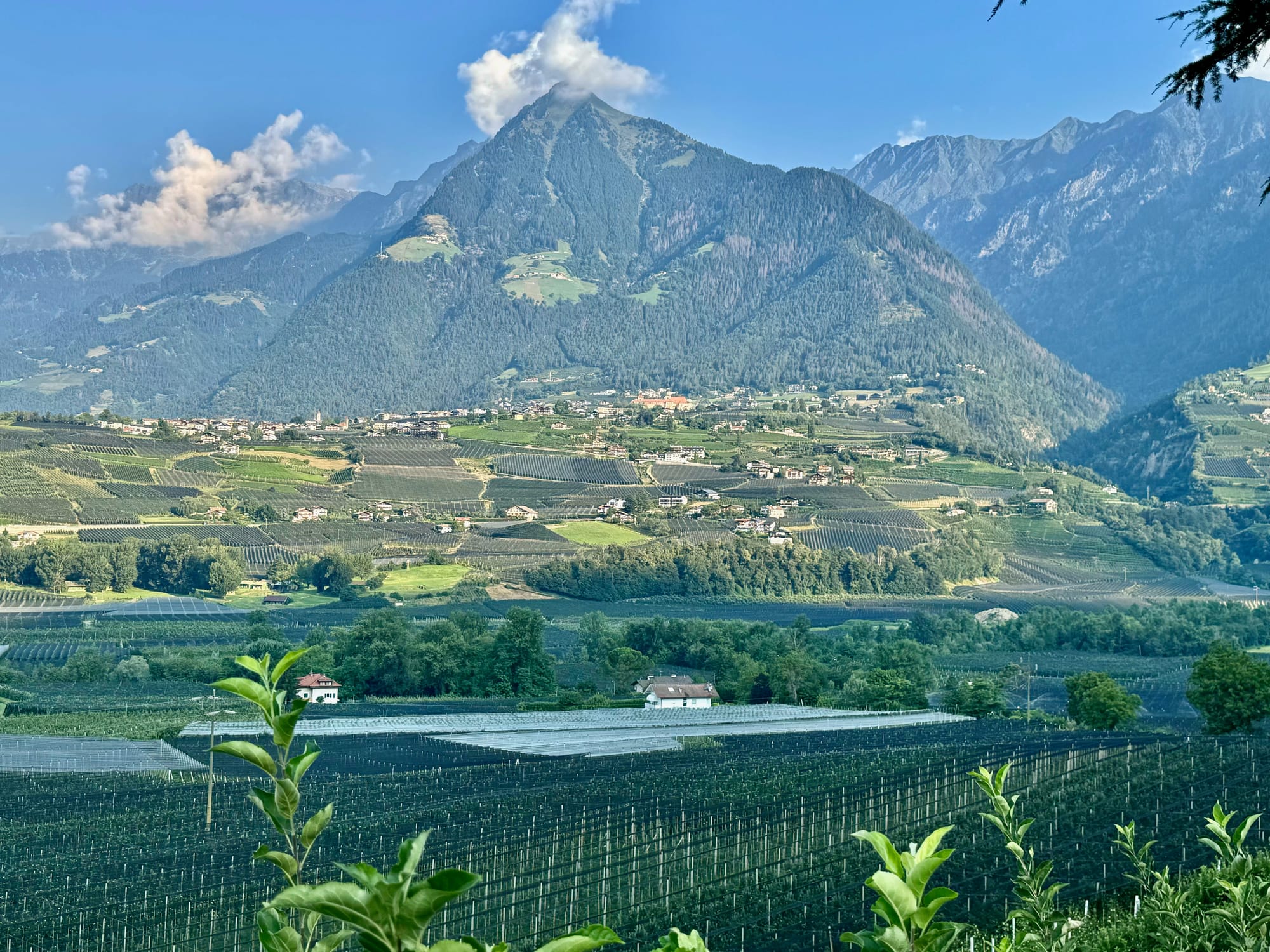
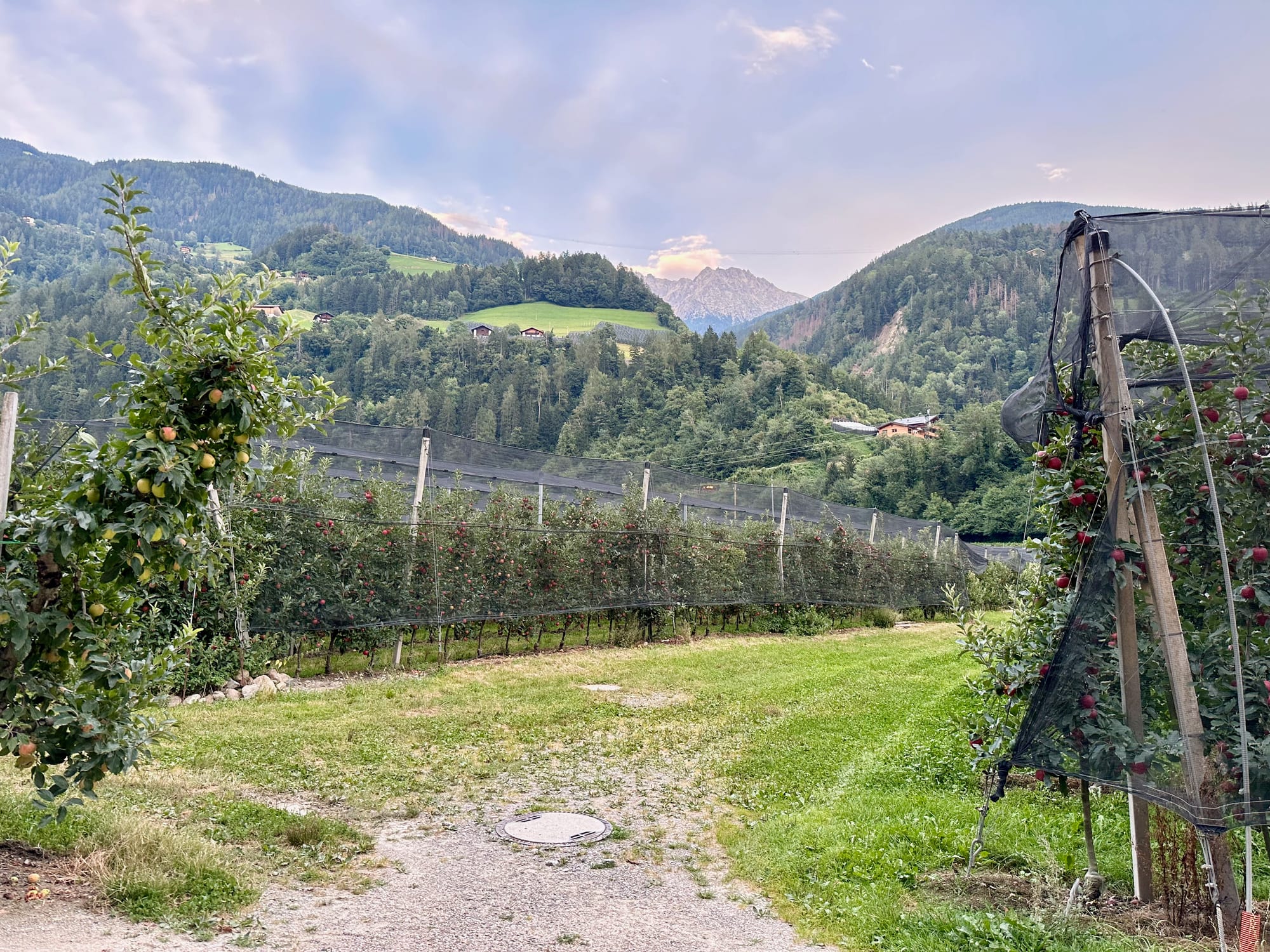
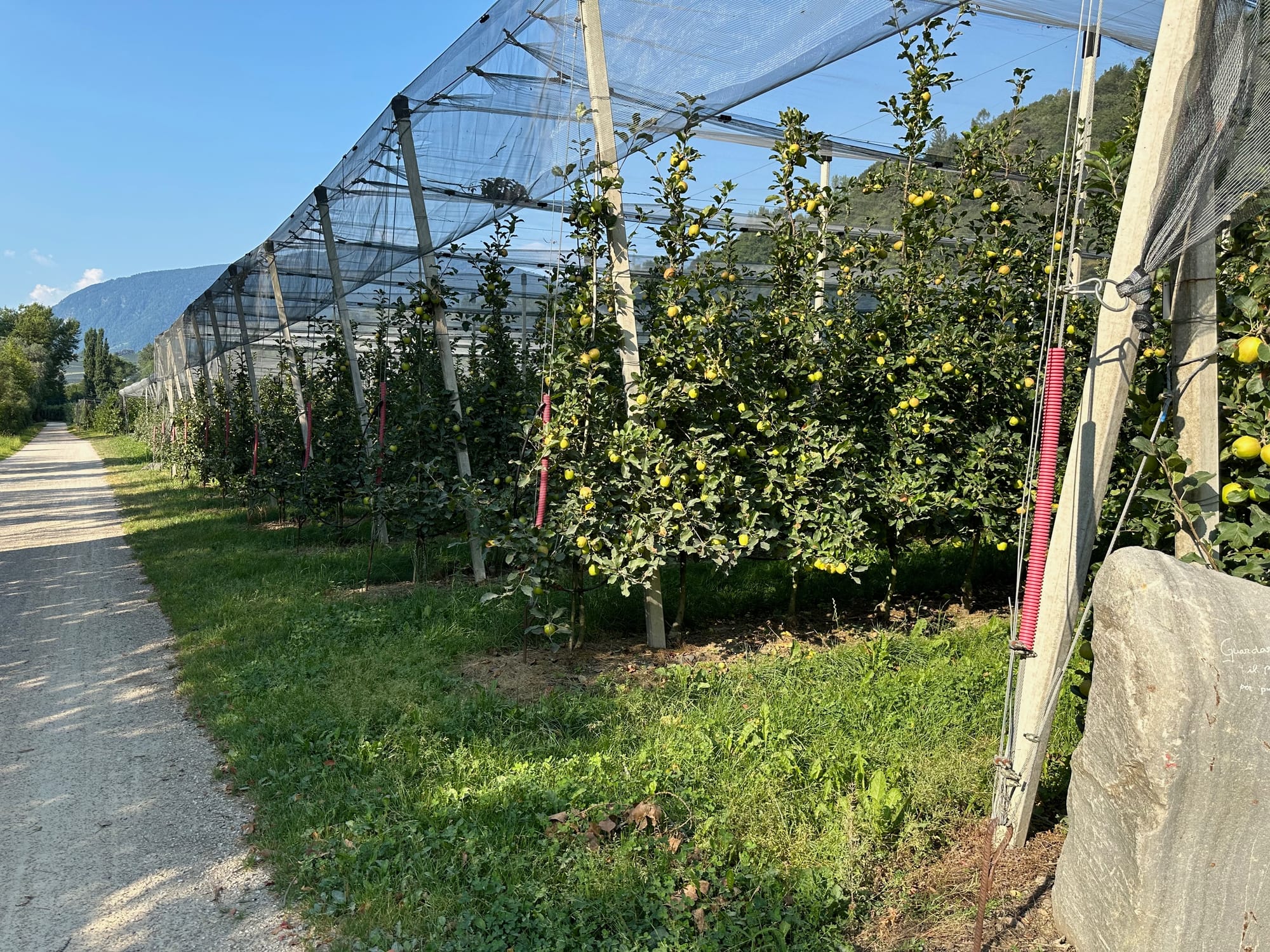
Various canals and trails along them for the agricultural infrastructure of Merano's vineyards and orchards, Ariana Altieri photos. Stone inscription: "Looking at nature is the first step to purify the mind"
Water was indeed the theme. Hot as it was, we tried every way we could to beat the heat in Merano. Their deluxe-without-parallel public baths and pools complex Terme Merano. Cool dips in the Passer as it flowed through town. Copious amounts of gelato.
Shop talk saves the day
After getting acclimated we stopped in the designated permit-vendor to find out about fly fishing opportunities.
Jawag, the local emporium, had traditional Südtiroler garb (e.g. dirndl and lederhosen) as well as outdoor clothing on its top floor, but the bottom floor was for the gear: hunting and fishing equipment.
We took a look at the wall of fame, talked ourselves out of trying to catch a 65 lb. carp, chatted the manager up about our options, and suggested we were interested in trying to find marbles.
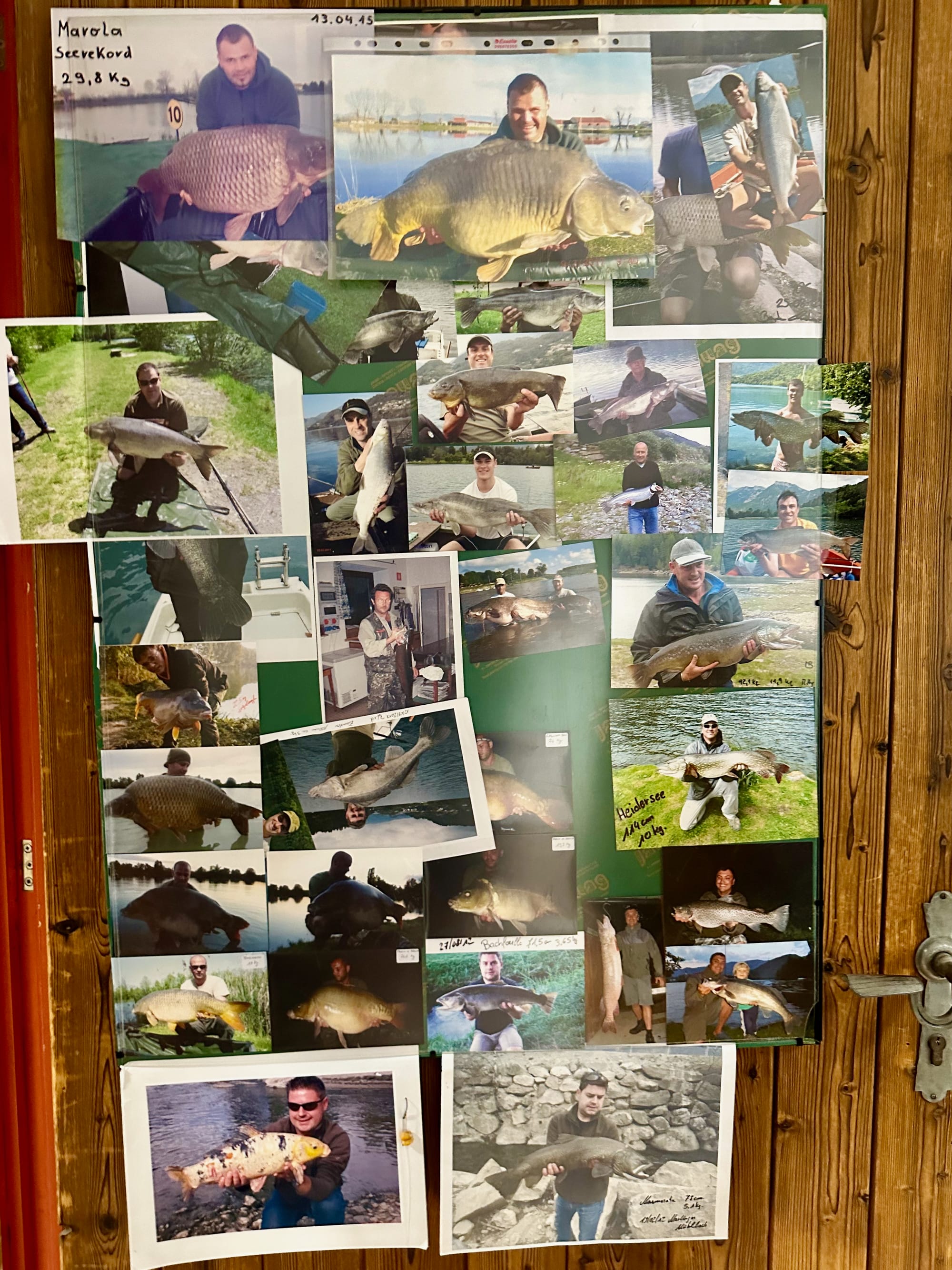
He directed us to the Passer, and said we were in luck: the Passer would be unfishable in a few days due to upstream construction creating. We had arrived just in time.
But, it wouldn't be easy. Streamers, and any additional weight that wasn't part of the fly, weren't permitted on the Passer. Getting larger flies as deep as possible would be the goal. We bought a dozen guaranteed winners.
A healthy agriculture-adjacent trout stream
Back at the ranch (castle) with our permits, I looked at the map again. The Passer is the same river that runs right through town. It's the same one everyone promenades along, thinking thoughts of Sissi and romantic love and simpler times. It's the same one with all the orchards and vineyards dumping into it.
The stretch of the Passer we fished runs right along these properties, a gravel trail with cyclists and joggers headed up and down all day. How on earth could all this runoff from orchards, and pesticides, and fertilizers, dump into the river and it still be healthy? Ag runoff is one of the largest trout stream killers in the United States. It's still a mystery to me how the water could be so clear so close to all this.
If I lived in Merano, I would probably take it upon myself to come to understand how water rights work there, how they balance old and new. It feels like there must be layers of history and culture to unpack in that topic alone. And seemingly they’re doing a good job; local sources boast the river is exceptionally healthy.
When it came time to fish the next morning, we got up as early as we could, fashioned ourselves some to-go coffees, and headed up, out of town proper, to the designated stretch.
Our directions from Jawag's proprietor told us to park at the soccer field, which seemed incongruous after descending a mile down a twisty-turny single lane, through driveways and farmstead garage aprons. But there it was: a municipal soccer field, the home of ASV Riffian-Kuens. An utterly baffling idea when I considered how crowded with traffic our fields get. Perhaps the teams arrived by bus, and spectators took a hidden tram down. Or maybe they floated down with one of the splash-and-giggle outfits that runs the Passer.
Trails ducking down from the main gravel track paralleling the river revealed a treasure trove of pockets to pick, and in the morning light I envisioned marble trout hiding inside very bit of soft water, and monsters in the deep channels.
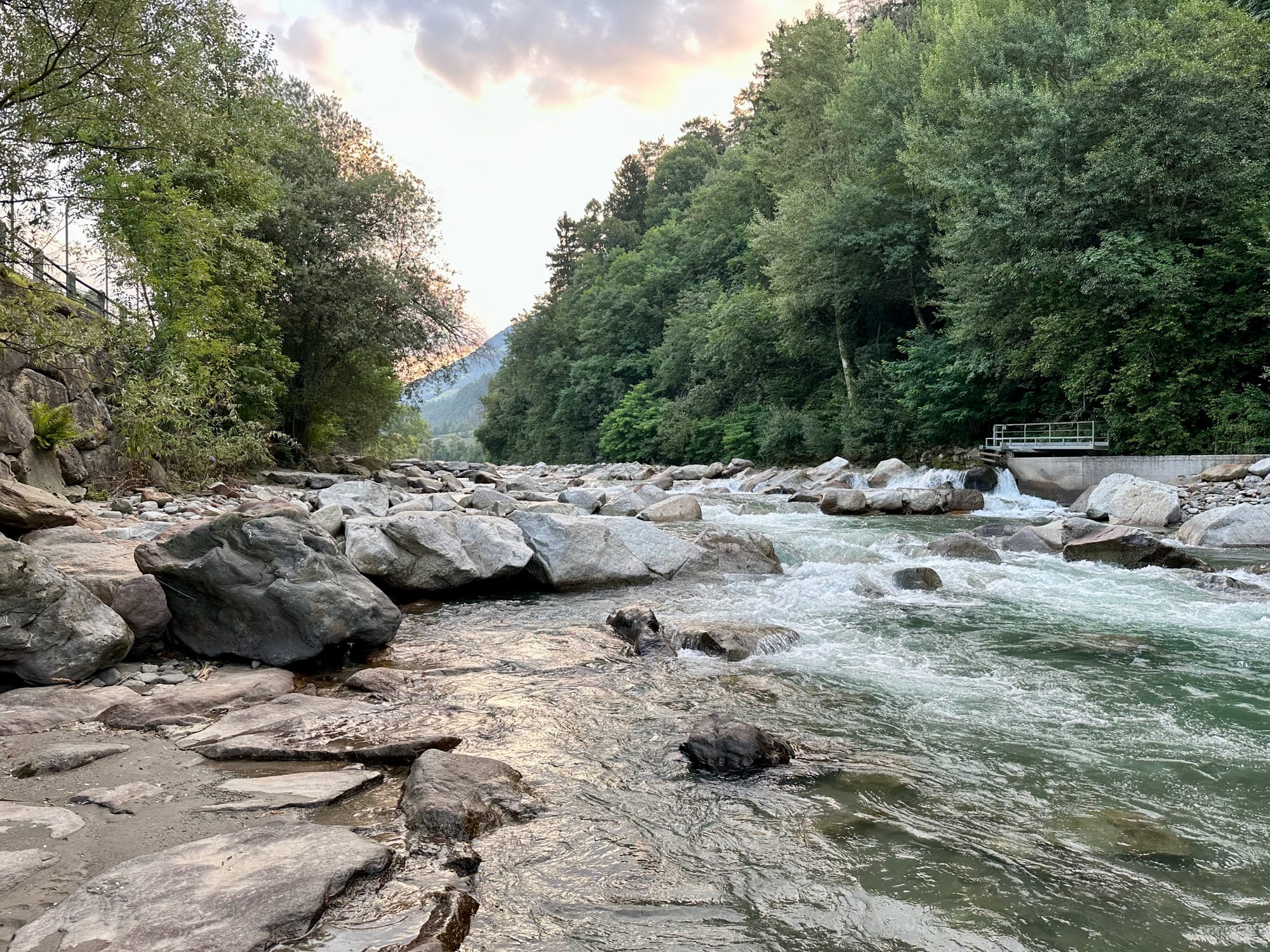
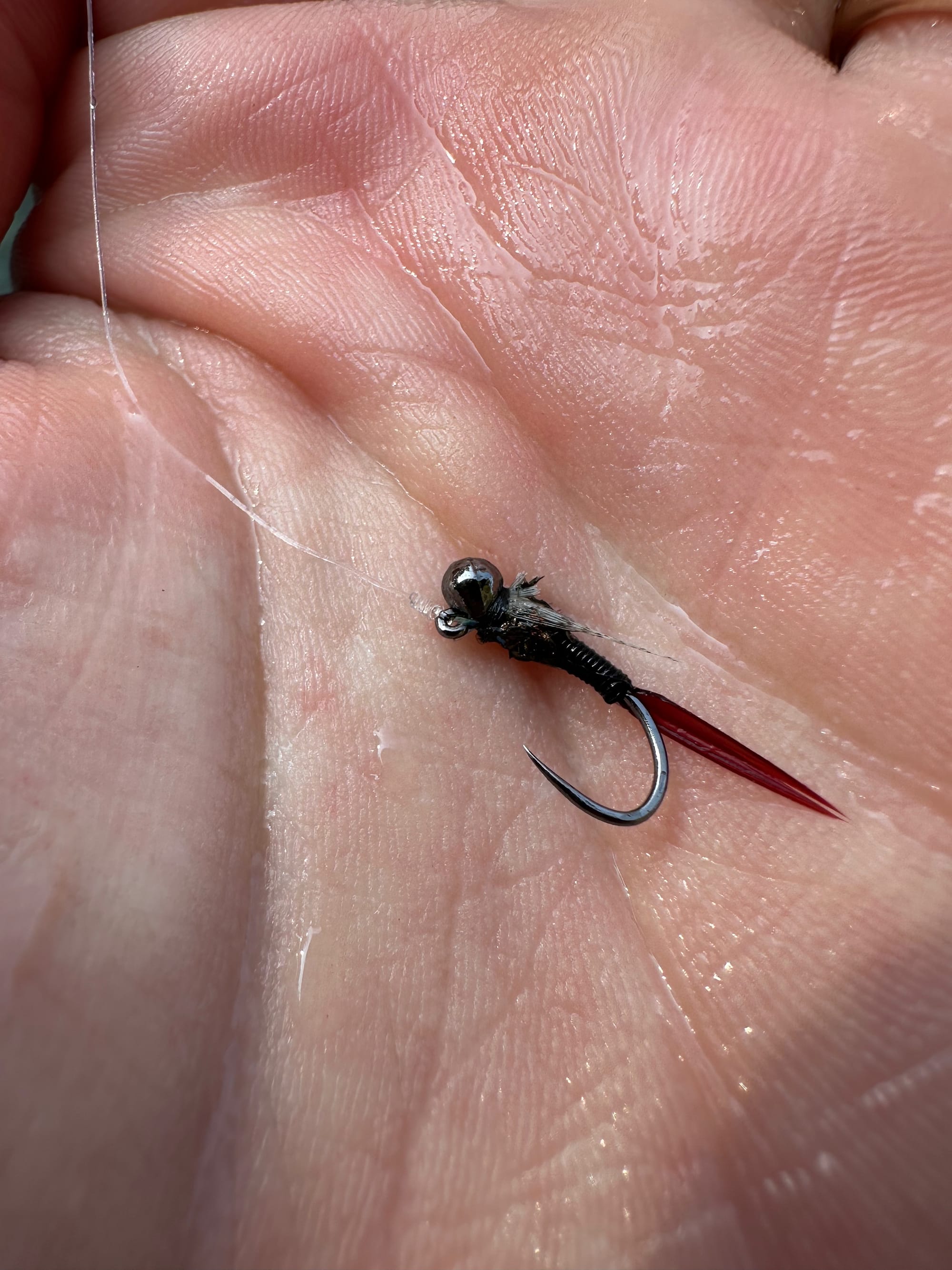
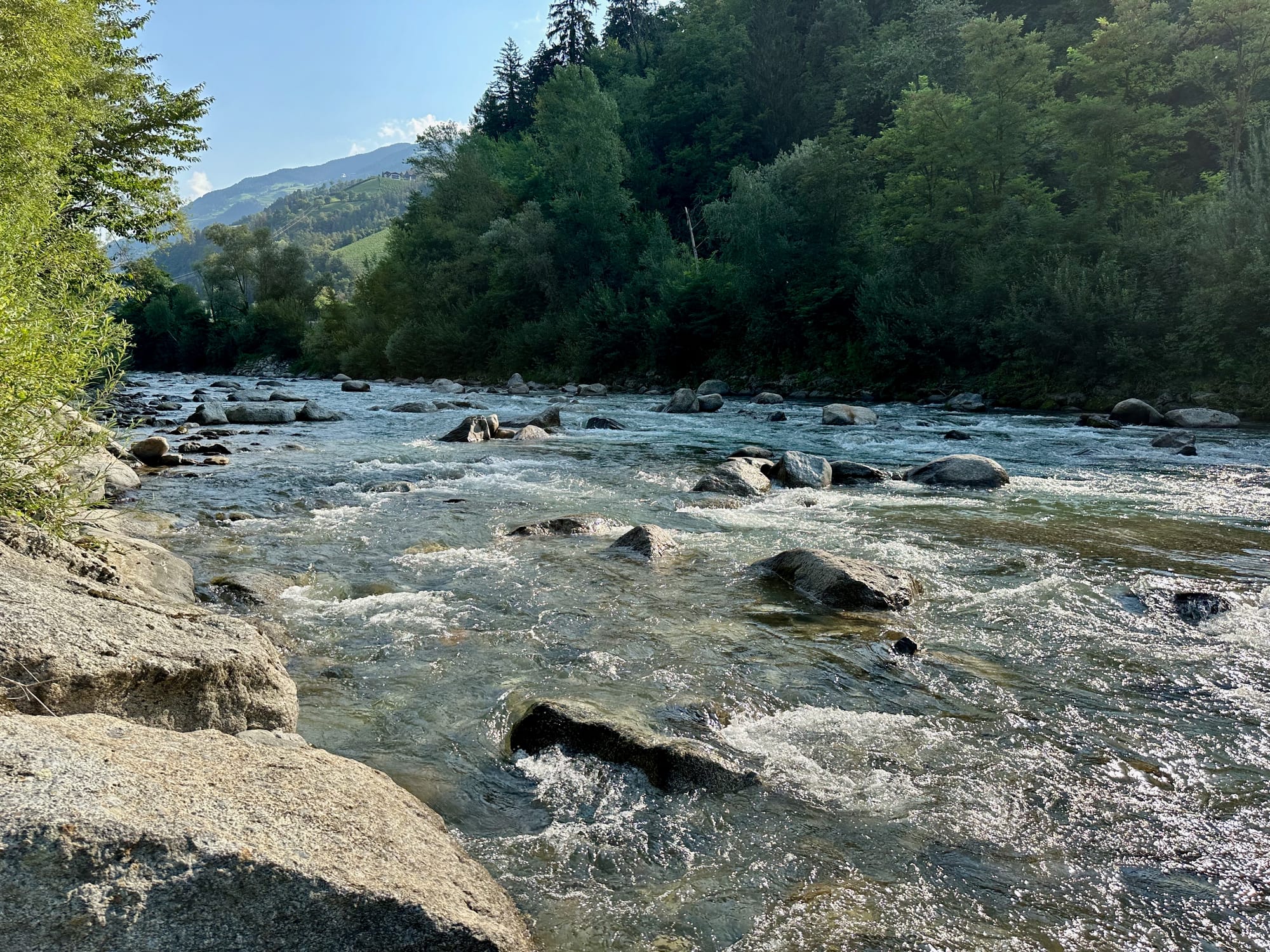
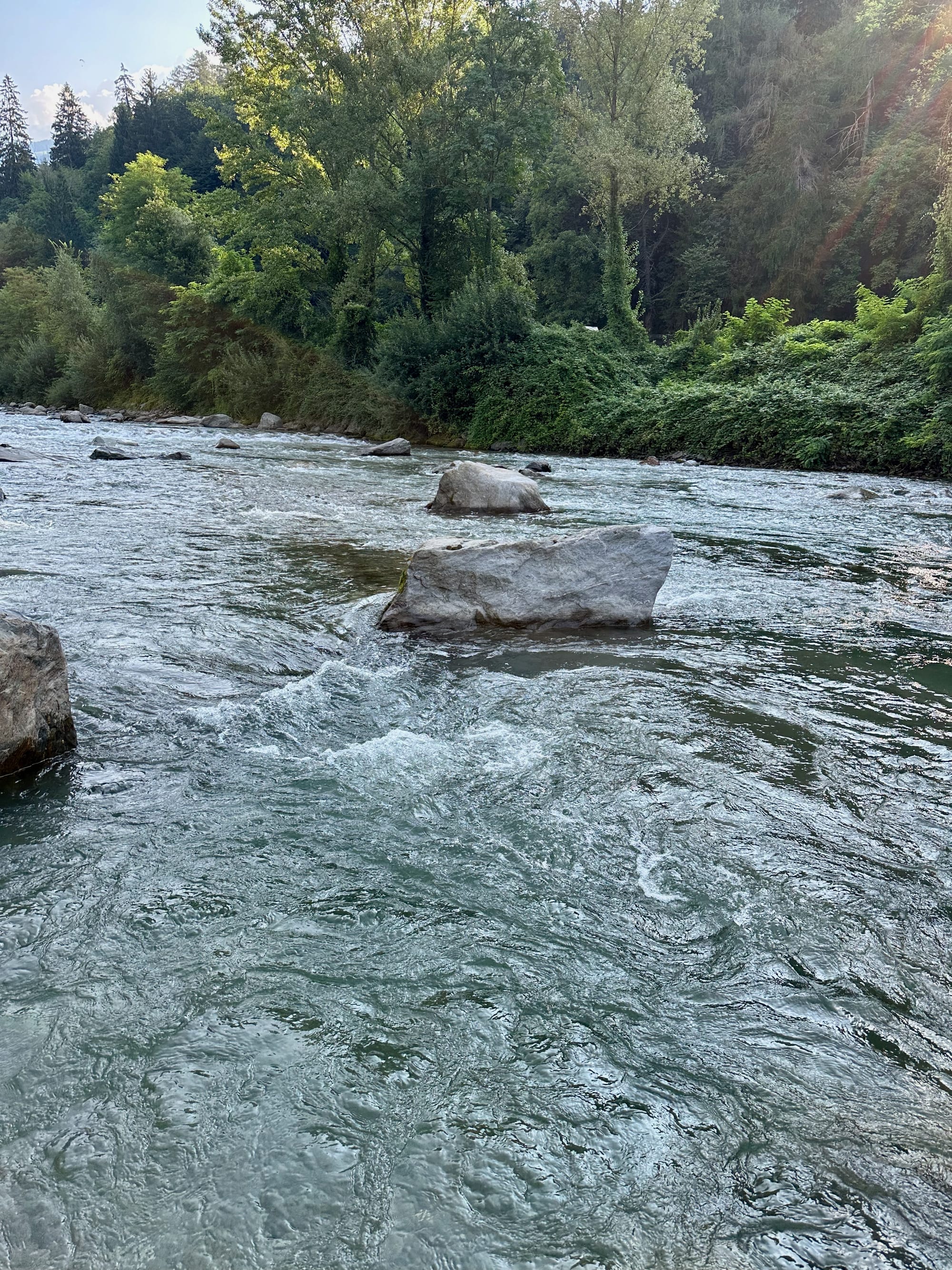
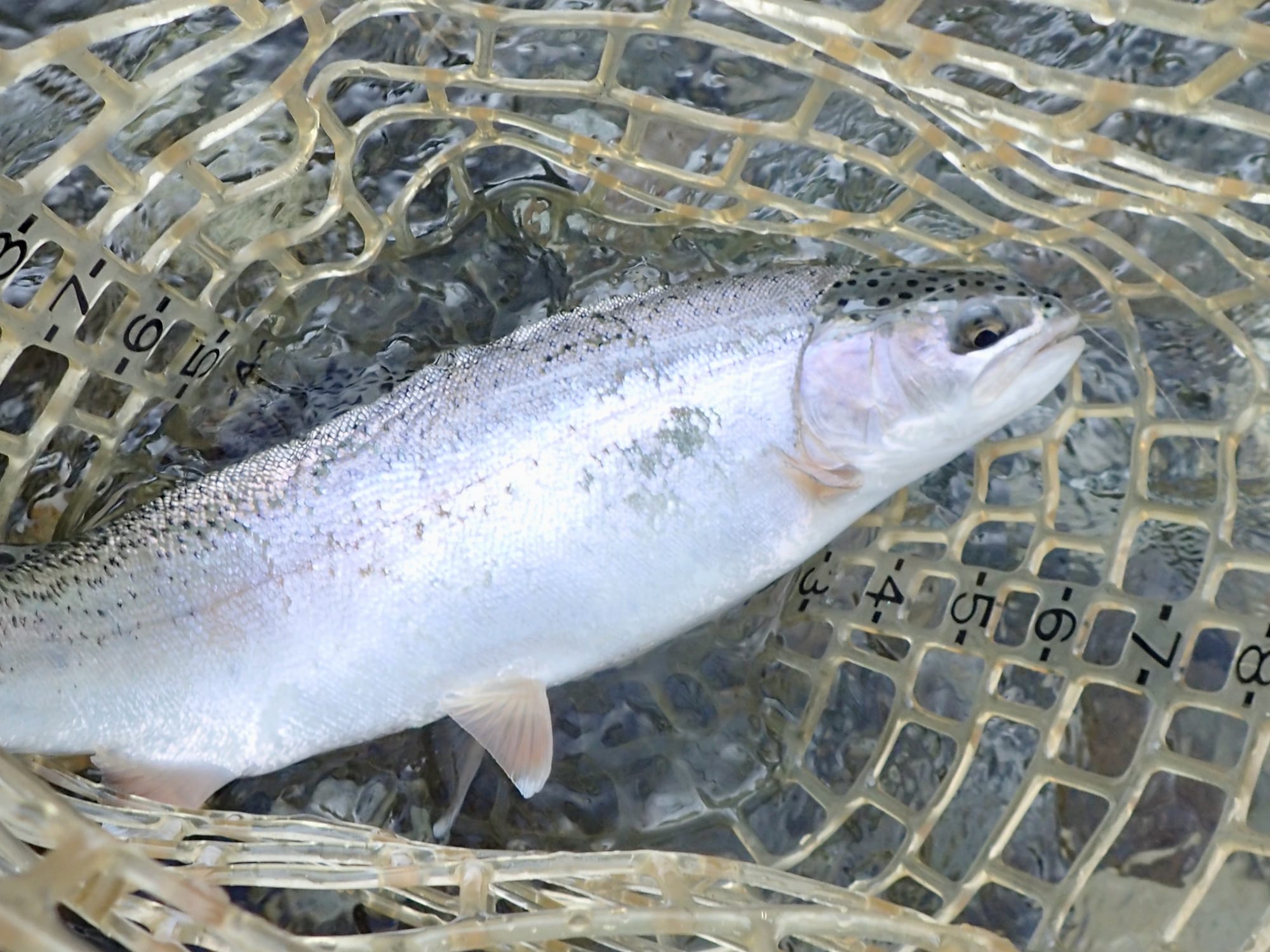
Rock hunting
You’re probably figuring out why I haven’t gotten the whole "catching a marble trout" part yet. You’re right. It’s because I didn’t catch one. I tried my darndest but it wasn't to be.
It was mid-way through the morning, around 8, as I was moving pool-to-pool, up toward a riffle that felt deeper than the rest, and perhaps more likely to hold a bigger fish. I had caught a few rainbows on the nymphs herr Jawag at the shop suggested, fished as deeply as I could without adding any additional weight. Surely as the sun started hitting the water, and the day warmed, the bigger fish, marble trout included, would head for the deepest slots.
I crept along, ever so slowly, and just like that placed a foot wrong—on a grapefruit-sized chunk of marble, I kid you not—which slid into the riffle in front of me.
And then a noble-looking fish with that unmistakable vermiform back materialized, in six inches of water, and slunk away downstream.
I hunted for the rest of the morning, then came back again in the evening to fish the upper stretch. Gentle angler, I put in the time. But the marbles remained elusive.
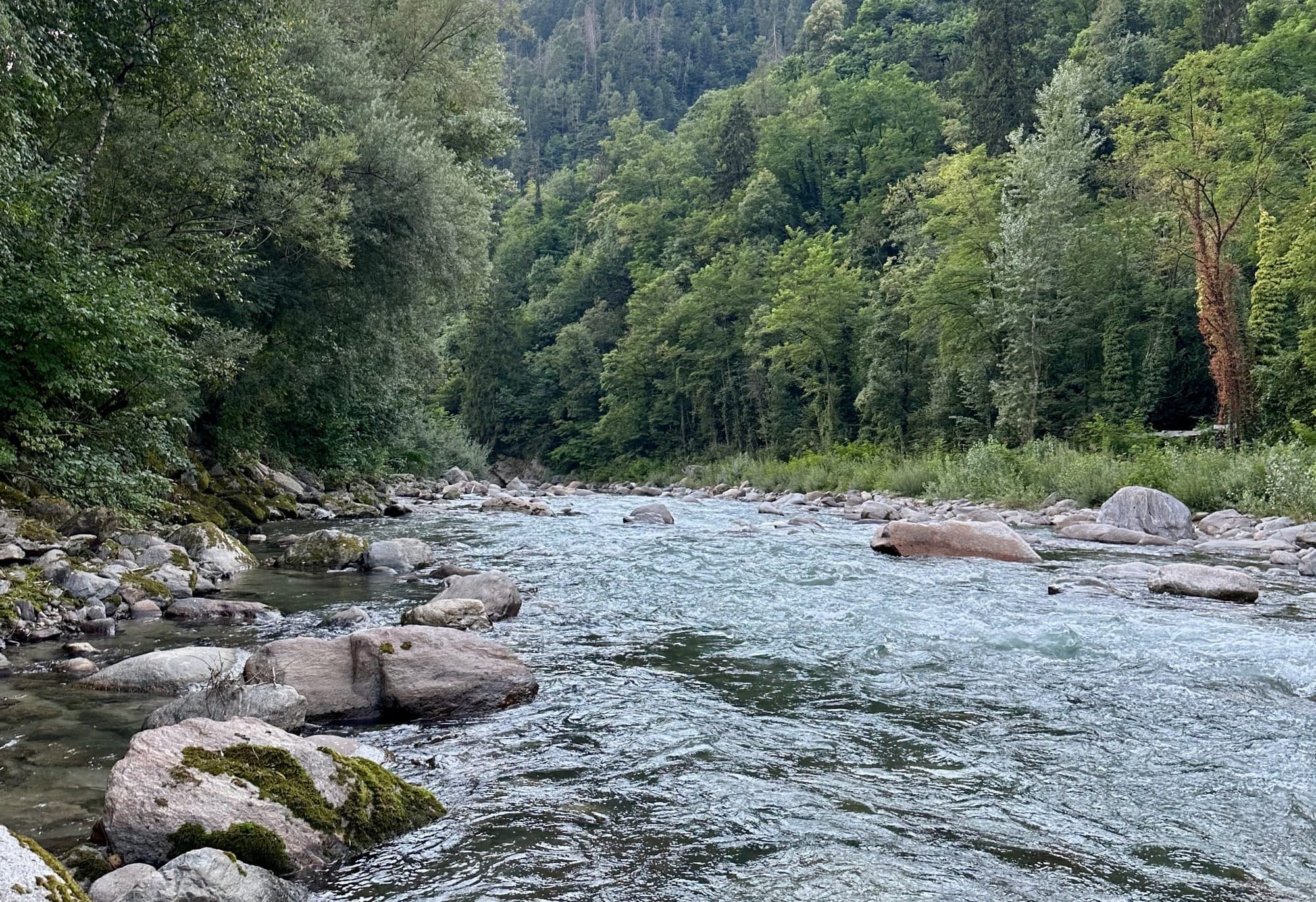
I saw chunks and slabs of rock in all shapes and sizes, but none living, none to tell the tale of the centuries they had lived in those rivers. The Passer rolled on without me.
Ah well—all the more reason to head back, and perhaps this time swing into Slovenia.

I'd love to know:
- Have you fished in Italy?
- Have you fished in Switzerland?
- Reply, or let me know in the comments.
In the next few installments of the Fly fishing in the Italian Alps series we're headed Piemonte, for epic days on the Mastallone and Sesia, so stay tuned.
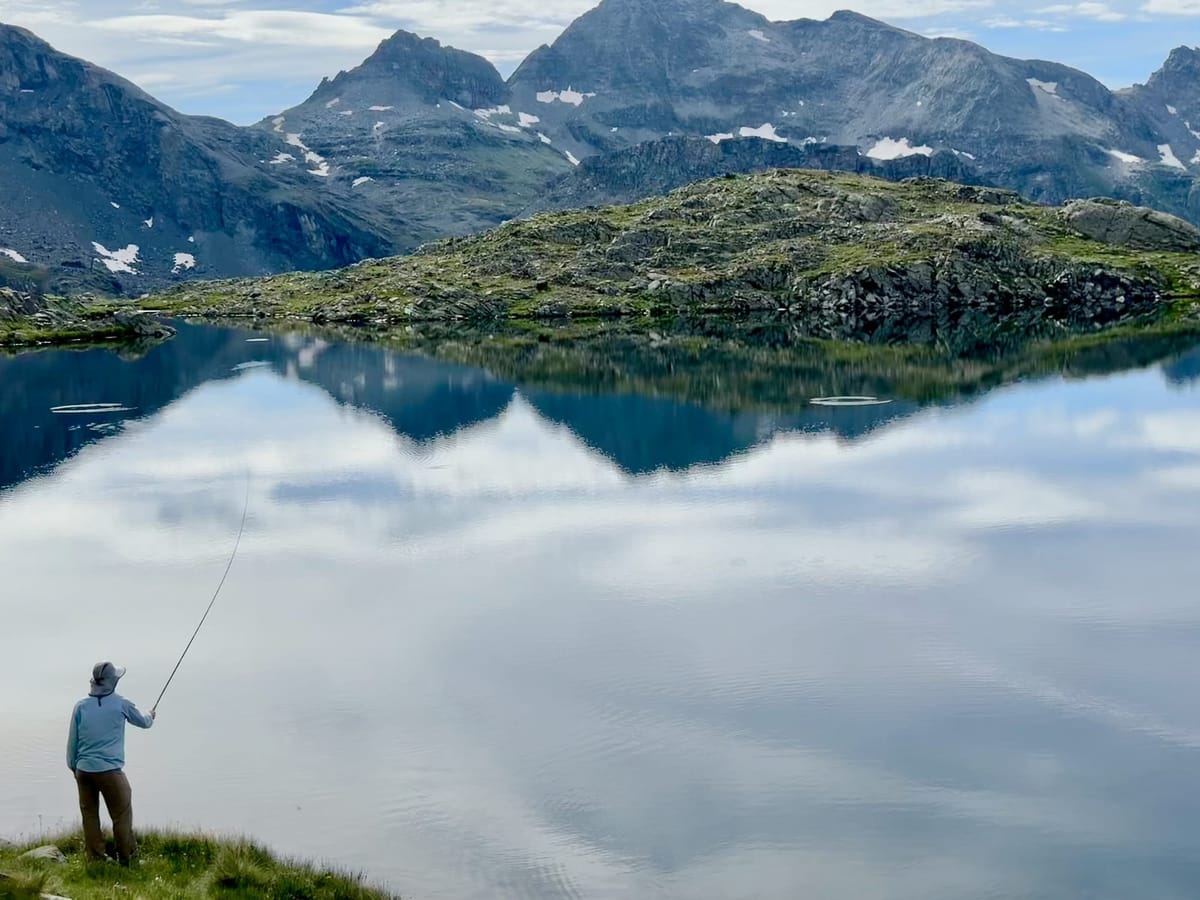
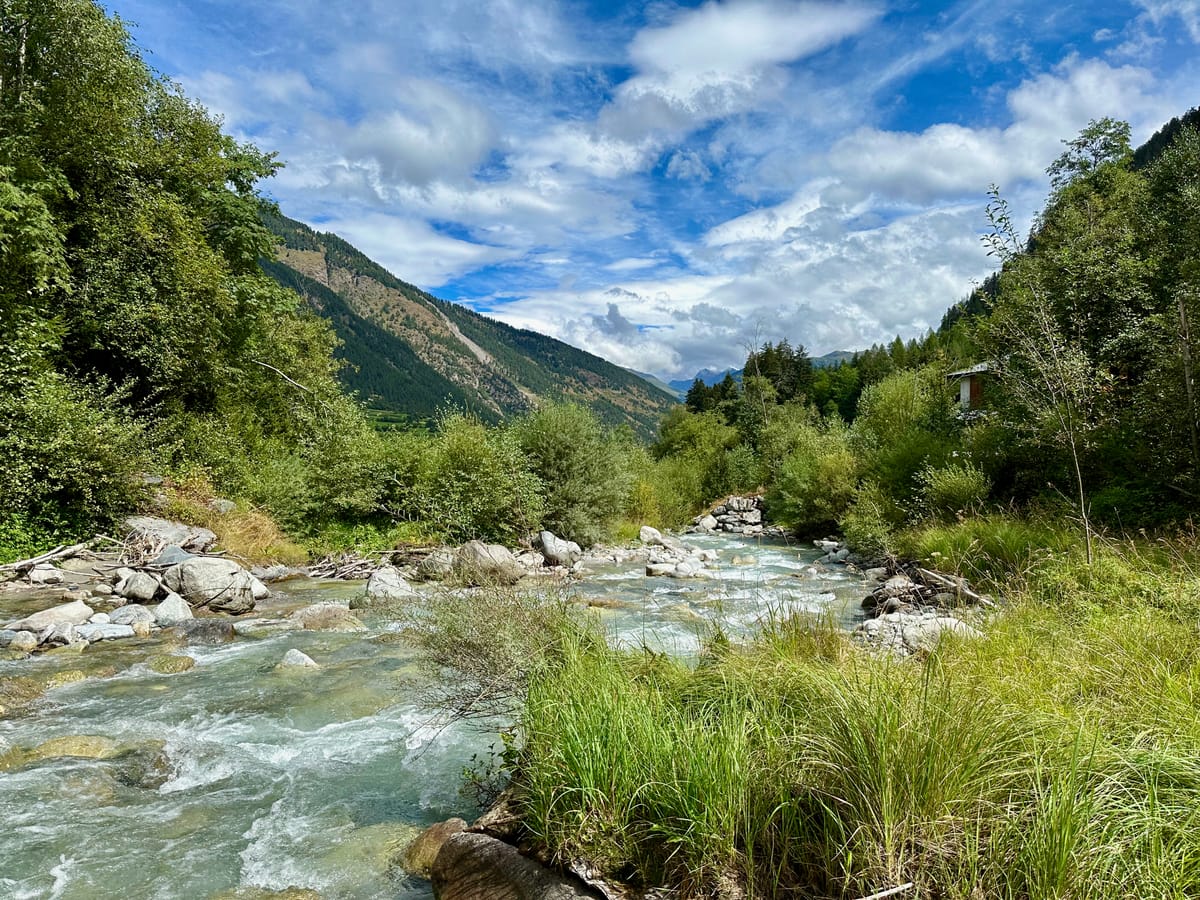
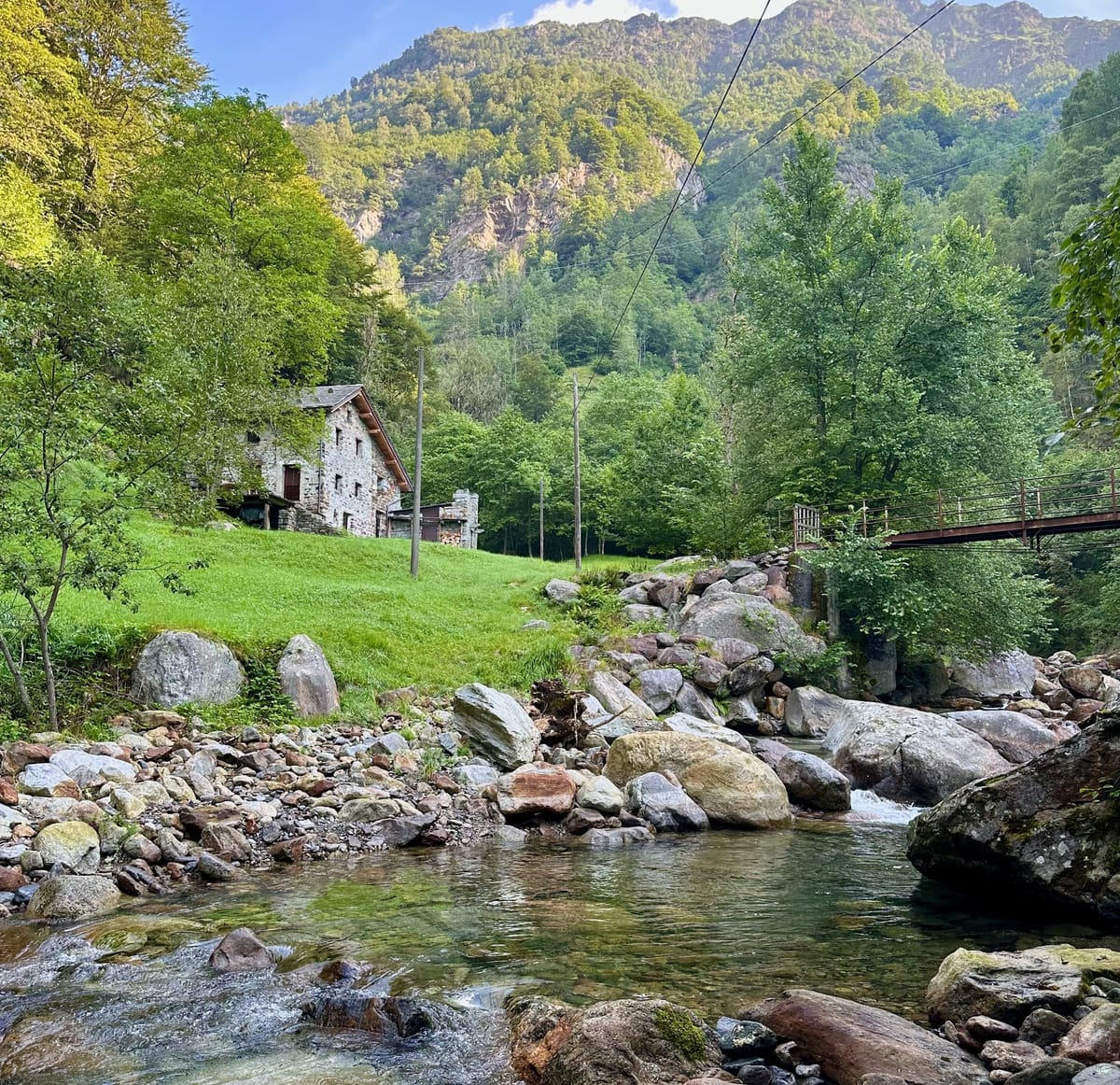
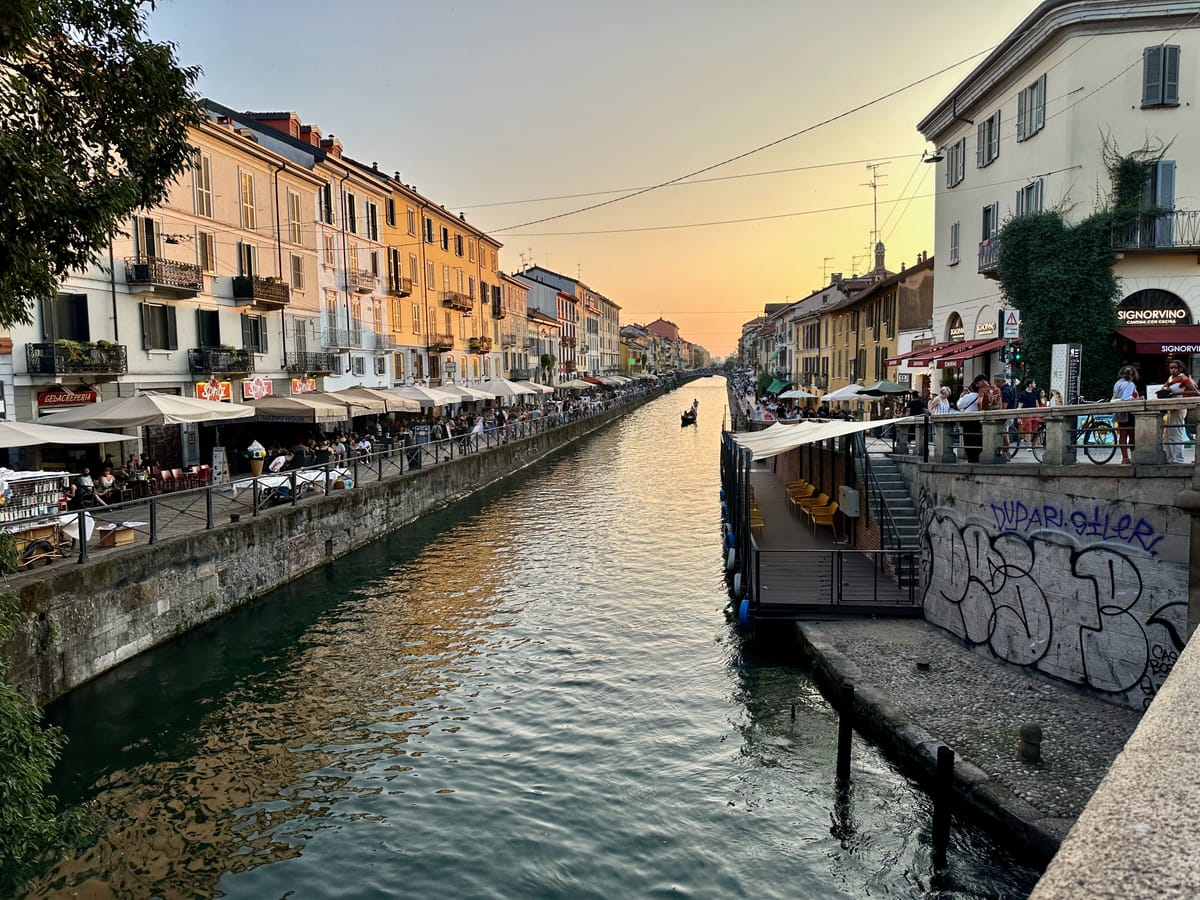
p.s. "Music for those who know"...
𓆟 𓆝 𓆟








